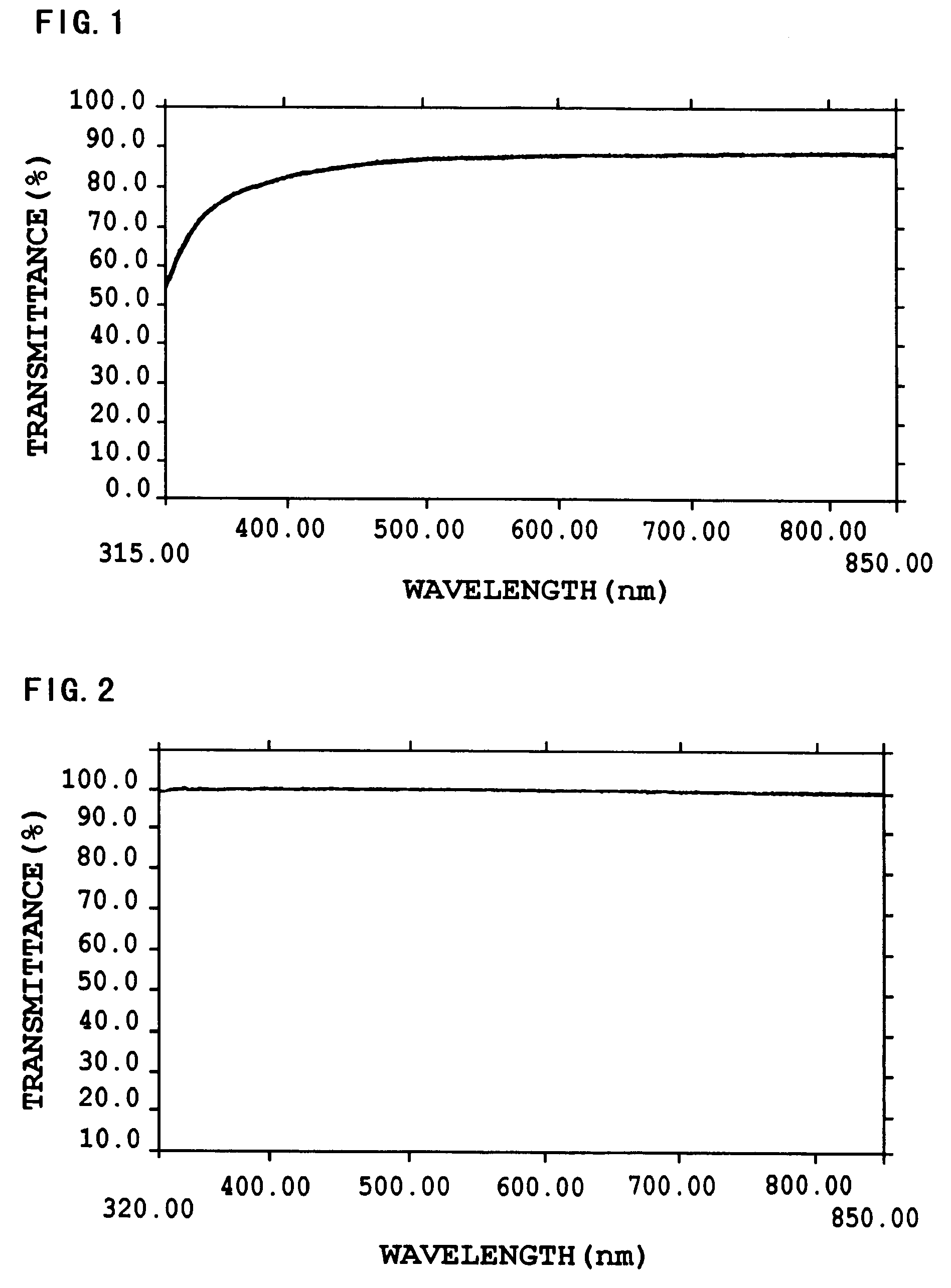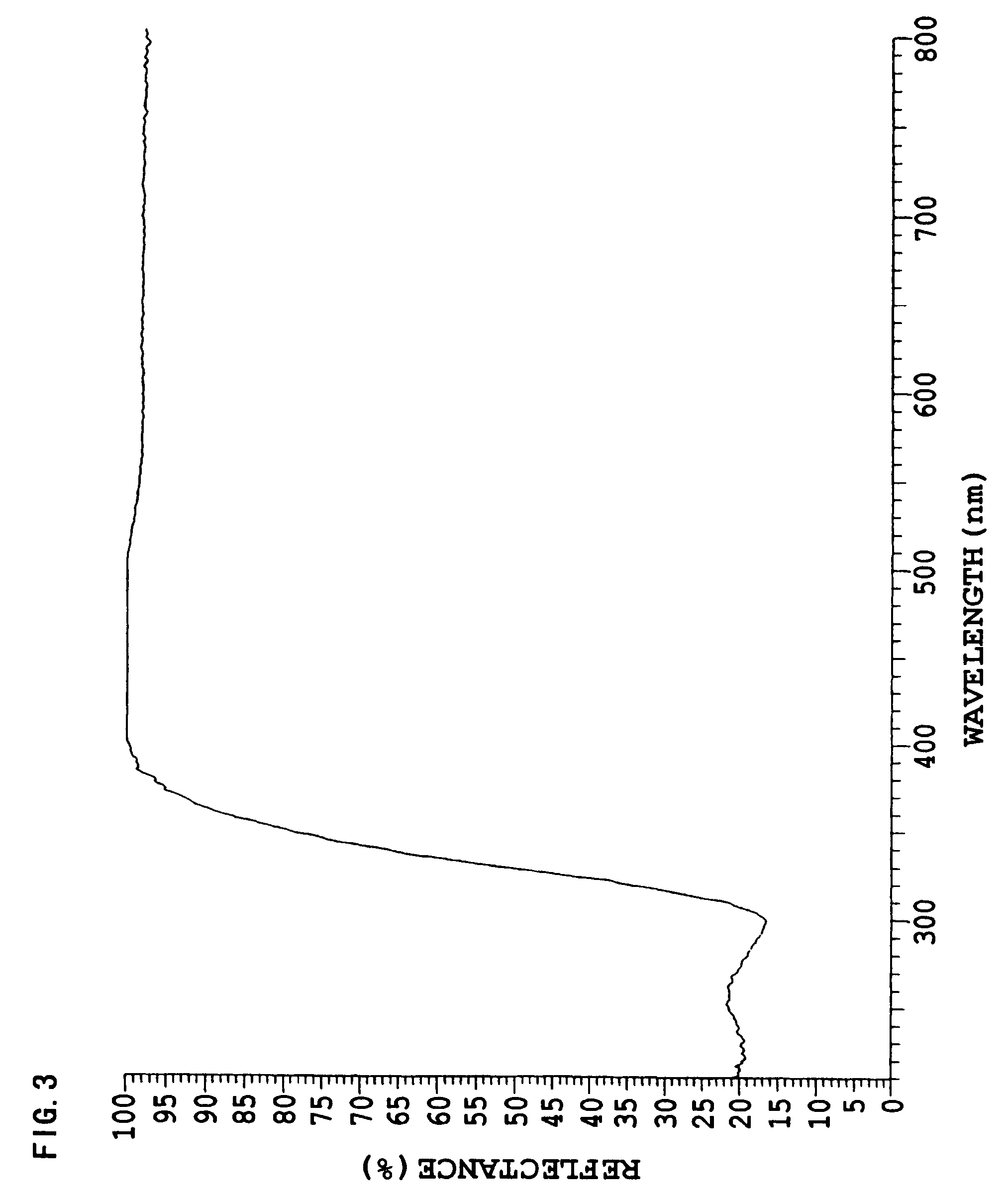Layered titanic acid, lamellar titanic acid, lamellar titanium oxide and method for producing lamellar titanic acid
a technology of lamellar titanium oxide and layered titanic acid, which is applied in the direction of titanium compounds, alkali titanates, synthetic resin layered products, etc., can solve the problems of increasing energy consumption and reducing productivity, and achieves good dispersibility and large particle diameter/thickness ratio
- Summary
- Abstract
- Description
- Claims
- Application Information
AI Technical Summary
Benefits of technology
Problems solved by technology
Method used
Image
Examples
example 1
[0032]27.64 g of potassium carbonate, 4.91 g of lithium carbonate, 69.23 g of titanium dioxide and 74.56 g of potassium chloride were dry ground and mixed to provide a raw material which was subsequently calcined at 1,100° C. for 4 hours. After calcination, the resulting sample was immersed in 10 kg pure water, stirred for 20 hours, separated, washed with water and dried at 110° C. This resulted in obtaining a white powder which was identified as a layered titanate K0.80Li0.266Ti1.733O4 with a mean particle diameter of 44 μm and a mean thickness of 3 μm.
[0033]65 g of this K0.80Li0.266Ti1.733O4 was dispersed with stirring in 5 kg of 3.5% hydrochloric acid to exchange K ions and Li ions with hydrogen ions or hydronium ions. The subsequent separation and washing with water resulted in obtaining a layered titanic acid. The amount of K2O remained in the layered titanic acid was found to be 2.0%. The percentage of exchange of K ions was 92% and the percentage of exchange of Li ions was 99...
example 2
[0034]The layered titanate, K0.80Li0.266Ti1.733O4, was synthesized in the same conditions as used in Example 1. 65 g of this K0.80Li0.266Ti1.733O4 was dispersed with stirring in 5 kg of 0.17% hydrochloric acid to exchange K ions and Li ions with hydrogen ions or hydronium ions. The subsequent separation and washing with water resulted in obtaining a layered titanic acid. The amount of K2O remained in the layered titanic acid was found to be 4.5%. The percentage of exchange of K ions was 82% and the percentage of exchange of Li ions was 99% or over. The percentage of exchange of K ions and Li ions, in combination, was 86%. This layered titanic acid was dispersed in 5 kg water. Subsequently, 250 g (11 equivalent %) of 1% aqueous solution of n-propylamine was added thereto with stirring. After about 30 minutes of stirring, 3.5% hydrochloric acid was added to adjust the dispersion to a pH of 2.0. After an hour of stirring, the dispersion was separated by suction filtration. The resultin...
example 3
[0035]A lamellar titanic acid was obtained using the same conditions as in Example 1, except that the basic compound for use in the delamination comprised 350 g (12 equivalent %) of 1% isopropanolamine. Measurement revealed a residual K2O content of 1.0%, a mean particle diameter of 30 μm and a mean thickness of 0.2 μm.
PUM
| Property | Measurement | Unit |
|---|---|---|
| thickness | aaaaa | aaaaa |
| thickness | aaaaa | aaaaa |
| temperature | aaaaa | aaaaa |
Abstract
Description
Claims
Application Information
 Login to View More
Login to View More - R&D
- Intellectual Property
- Life Sciences
- Materials
- Tech Scout
- Unparalleled Data Quality
- Higher Quality Content
- 60% Fewer Hallucinations
Browse by: Latest US Patents, China's latest patents, Technical Efficacy Thesaurus, Application Domain, Technology Topic, Popular Technical Reports.
© 2025 PatSnap. All rights reserved.Legal|Privacy policy|Modern Slavery Act Transparency Statement|Sitemap|About US| Contact US: help@patsnap.com


